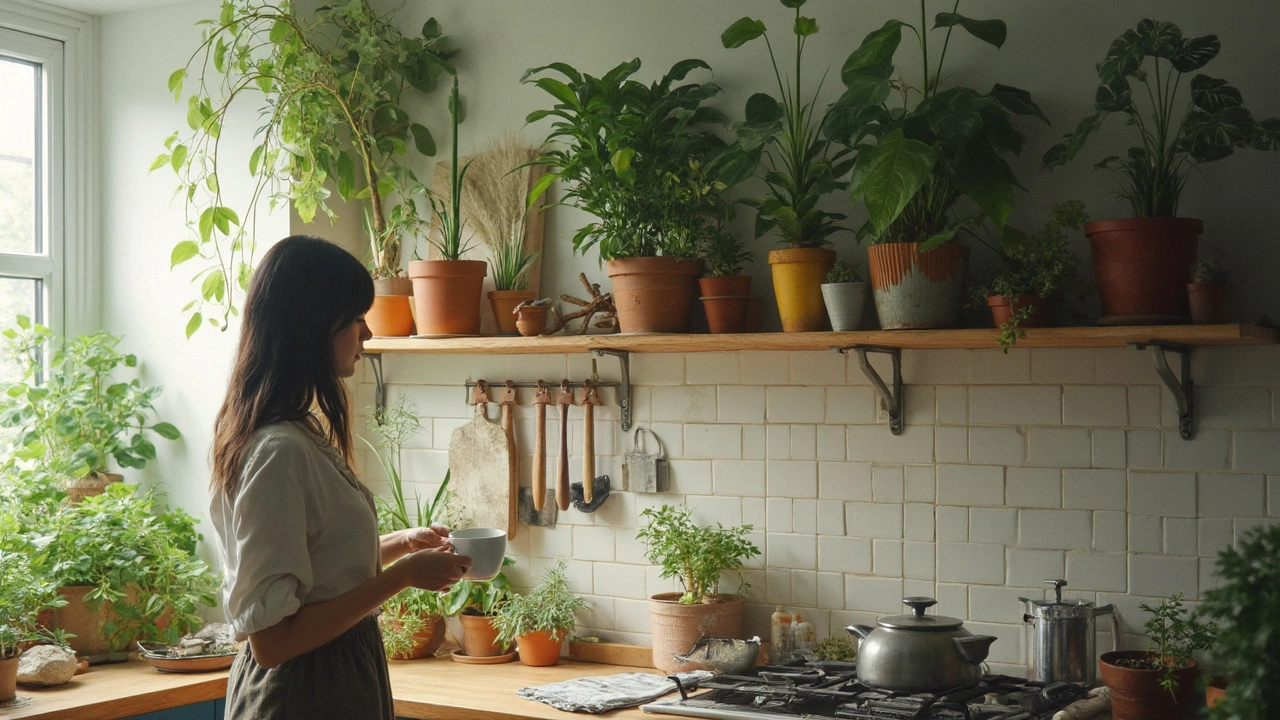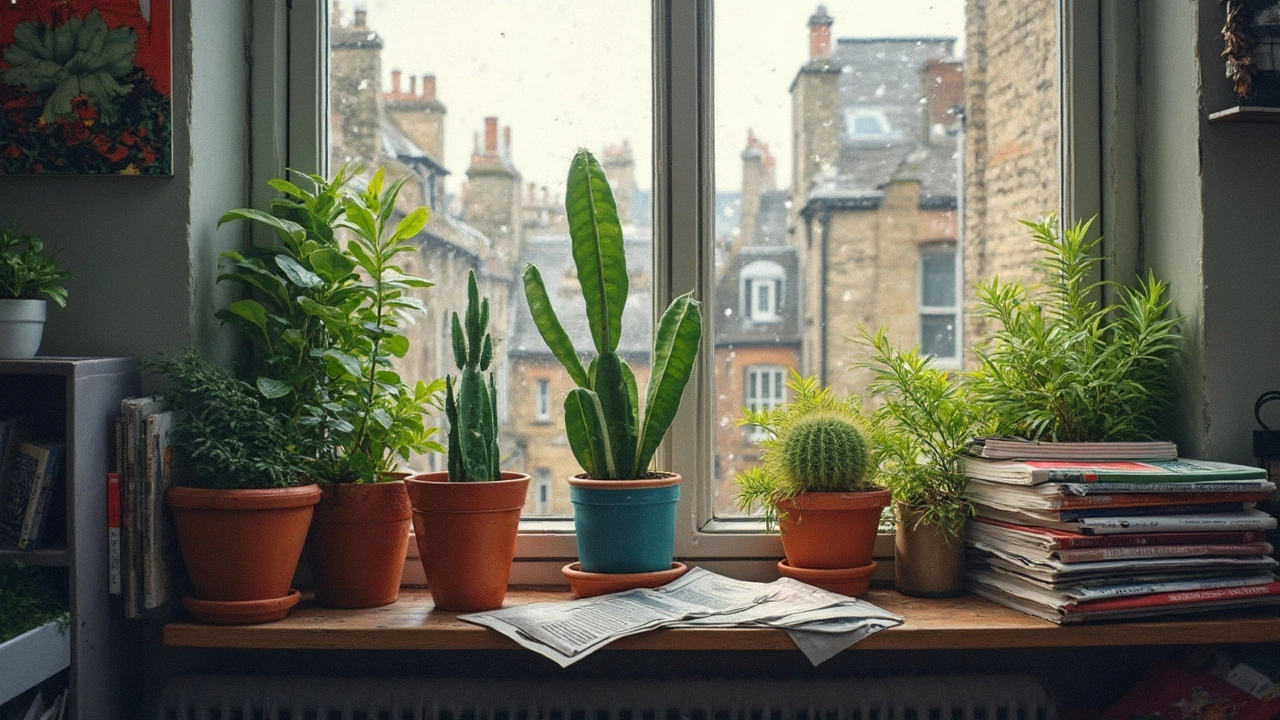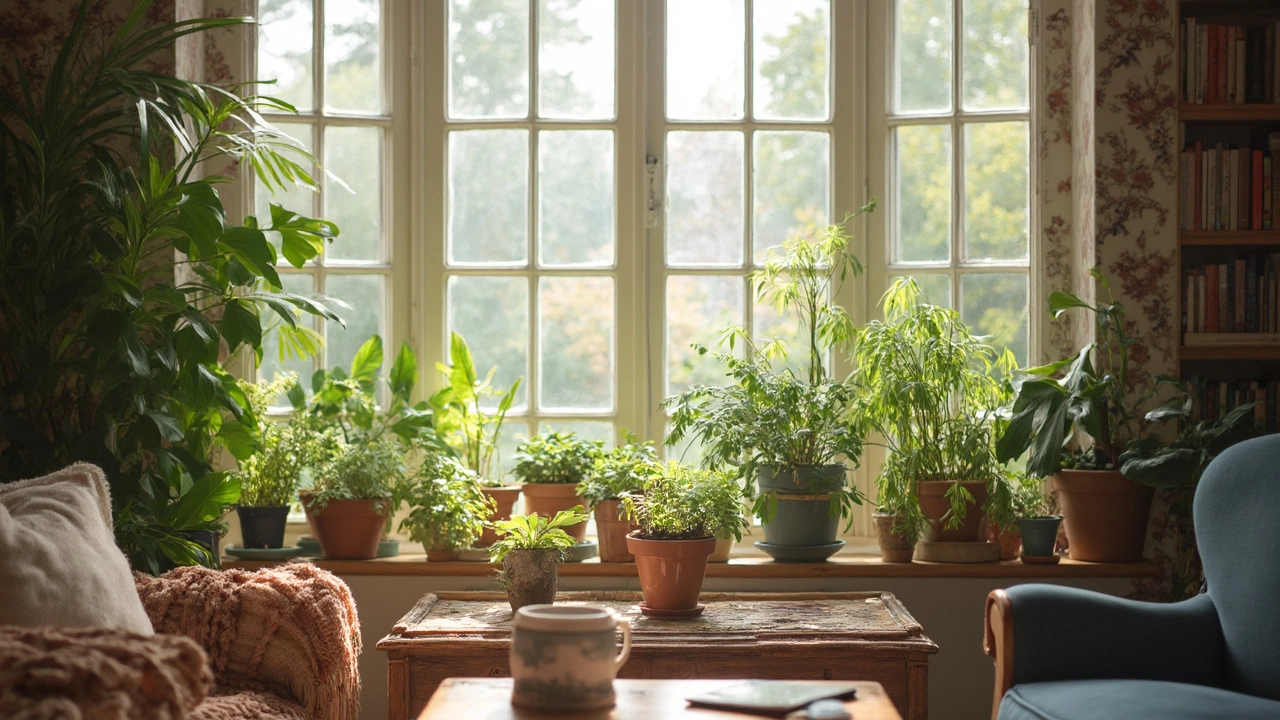Ever been shamed by a shriveled plant? You bought it full of hope, watered it religiously...and now it mocks you from its brown, droopy corner. Here's the wild truth: some plants would rather you left them alone. While the influencers are out there misting, pruning, and crooning to their precious greens, there’s a rebel group of houseplants that prefer you keep your distance, like cool introverts at a party. Intrigued? Let's get right into the weeds—quite literally.
The Strongest Survivors: Meet Plants That Love Neglect
Plants that thrive on neglect come in all shapes and sizes, but their one uniting trait is sheer stubbornness. These are the botanical tough guys—the types that shrug off missed waterings and months of dust. Let’s start with one champion: the snake plant (Sansevieria). This guy's practically the Rambo of houseplants. Native to West Africa, it stores water in its upright, tounge-like leaves and even the dimmest apartment corner doesn't faze it. Water it every two weeks—sometimes even less—give it any amount of sunlight (from bright indirect to shadier spots), and boom, it just keeps on growing.
The ZZ plant (Zamioculcas zamiifolia) is another legend in lazy gardening circles. Hailing from East Africa, the ZZ relies on its potato-like rhizomes beneath the soil that hold onto water forever. Neglect it for a month? It won’t even flinch. Those glossy, deep-green leaves have a slick, almost plastic quality and they stay perky even as your schedule spirals. Just don’t overwater; too much love is the shortest route to yellow leaves and root rot.
Cactus lovers, you already know: most cacti and succulents like Aloe vera want you to back off. They evolved in deserts, thriving in dry, rocky environments with little rainfall. If you’re tempted to water every Sunday, resist that urge—a little tough love keeps them happy. In fact, overwatering is the most common cause of death for these sun-loving plants. They’d rather you forgot about them than drown them in kindness.
Pothos (Epipremnum aureum), often called devil’s ivy, is perfect if you want a clear sign when it’s thirsty—its leaves wilt, then bounce back after watering. It tolerates uneven schedules, low light, and can even thrive in water-filled vases without soil.
Of course, these plants aren’t completely bulletproof. Like indestructible action heroes, they have limits. If the room’s too cold, or if you never water at all, they’ll eventually give up. But their tolerance for neglect is leagues above fussier types like ferns or calatheas.

Science of Survival: Why Some Plants Love to Be Ignored
So, what gives these plants their stubborn edge? It’s all about evolution. Take the snake plant, again: it uses a unique type of photosynthesis called CAM (Crassulacean Acid Metabolism). At night, it opens tiny stomata on its leaves to collect carbon dioxide, closing them during the day to conserve water. This means they can handle dry air in heated apartments and cool air from air conditioning—conditions that melt more delicate houseplants.
ZZ plants, similarly, store moisture in those rhizomes underground, allowing them to ride out drought. Their thick leaves slow evaporation, so they need almost nothing to keep looking fresh. Even better, both ZZs and snake plants act as passive air purifiers, snatching up toxins like formaldehyde and benzene—a fact validated by NASA’s famous Clean Air Study. It’s not life-saving filtration, but it feels good to know the biggest slacker plants in your home are also quietly tidying the air as you ignore them.
Want numbers? According to a 2024 survey by The Houseplant Journal, 68% of new indoor gardeners admit they kill at least one plant a year due to overwatering. When these gardeners switched to tough plants like snake, ZZ, and pothos, their "plant death" rates dropped by 80%. The data says it all—going low maintenance isn’t just an excuse for being forgetful, it’s a pro move.
| Plant Name | Watering Frequency | Light Needs | Bonus Survival Tip |
|---|---|---|---|
| Snake Plant | Every 2-4 weeks | Bright to low light | Forgives missed waterings |
| ZZ Plant | Every 3-4 weeks | Low to medium light | Thrives in dry homes |
| Pothos | Once soil is dry | Low to bright indirect | Recovers after missed care |
| Jade Plant | Every 2-3 weeks | Bright light | Requires minimal water |
| Succulents | Every 2-4 weeks | Direct sunlight | Skip winter watering |
There’s also something oddly satisfying about a plant that rebels against TLC. It’s like having a pet that stares you down every time you pull out the treat jar. Want lush, shiny leaves? Sometimes, doing less is the answer.

Pro Tips: How to (Not) Care For These Unfussy Plants
The beauty of these resilient plants is how they simplify everything. Still, there are a few tricks for keeping neglect-tolerant greenery at its best. First: always use well-draining soil—anything too dense traps water, which leads to root rot (the silent killer). Most pots these days come with a drainage hole. If yours doesn’t, drill one or switch the pot. If you’re using decorative outer pots with no holes, always remove the plant for watering, then let it fully drain before putting it back.
Here’s a key tip: only water when the soil is truly dry, not just at the top but a finger’s depth down. If you use a moisture meter, aim for the "dry" end before watering again. For snake plants, the leaves will start to wrinkle slightly if they’re desperate—otherwise, leave them be. ZZ plants will usually drop a leaf only if you’ve been completely absent for months.
Lighting matters, too, but these plants are forgiving. For snake and ZZ, north-facing windows or a few feet away from a brighter spot work fine. Pothos can even thrive under fluorescent office lights, making them popular cubicle buddies. Cacti appreciate a sunny sill but won’t complain if moved to less prime real estate for a couple of weeks.
Don’t waste money on fertilizer unless you’re really going for Instagram-worthy growth. These plants will soldier on with just basic potting soil, but a half-strength liquid feed every now and then (once in spring, maybe once in midsummer) gives them a little boost. You can dust leaves off with a damp cloth every few months, but that’s about as much pampering as they want.
If you notice relentless droopiness, yellowing, or soggy soil, dial back the watering. Leaves browning at the tips might just be from dry air or tap water minerals—not a red alert. Frankly, most problems happen because people try too hard. Resist the urge to fuss.
Thinking of gifting a plant to a serial plant killer? The ones we’ve covered are safe bets. And get this: there’s a market for “rescue plants” — shops where people drop off their former victims, and they go on to thrive in the next lazy household. So if you spot a half-forgotten snake plant in the corner at a yard sale, take it home, ignore it, and watch it come back to life. It’s the ultimate underdog story, right in your living room.
The bottom line? Don't let your tendency to forget be a source of guilt. With the right green roommates, that trait becomes a superpower. As counterintuitive as it sounds, neglect can turn your home into a vibrant, low-maintenance jungle—no green thumb required.
